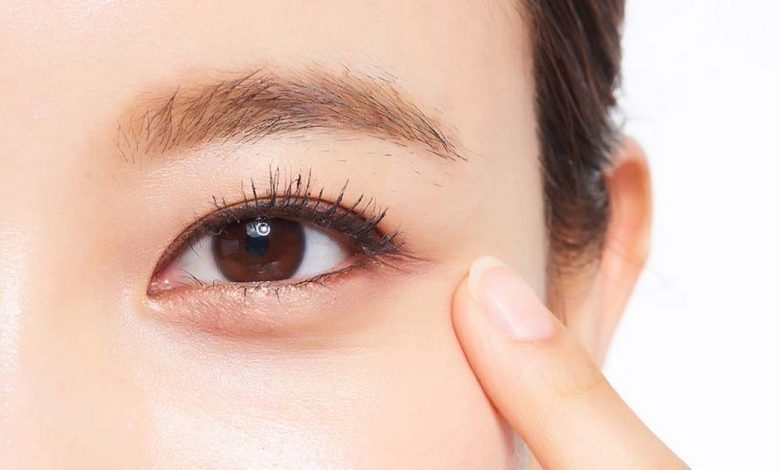Abnormal tilt of the eyes, mongoloid eyes: What's it, causes, symptoms, diagnostics, treatment, prevention

Palpebral slant – eye; Mongolian slant
Eye tilt, or the inclination of the palpebral fissure is determined by the direction of the oblique line, conventionally drawn from the outer corner of the eye to its inner corner.
Slanted eyes and epicanthus (Mongolian fold), which is an arcuate vertical fold at the inner corner of the eye, formed by the skin of the upper eyelid, normal for people of Asian descent.
Abnormally slanted eyes in other races may be a symptom of certain genetic disorders and syndromes..
The most common of these syndromes is Down syndrome.. People with Down syndrome also often have an epicanthal fold in the inner corner of the eye..
Causes of abnormal eye tilt
There are a number of possible causes of abnormal eye tilt., including:
- Nerve disorders: Damage or disruption of nerve signals, controlling eye movements, can lead to uncontrolled tilt.
- Muscle imbalances: Disorders in the muscular work of the eye can cause an incorrect position.
- Structural anomalies: Abnormalities in the structure of the eye socket or surrounding tissues can lead to a change in the position of the eye.
- Trauma: Injuries to the head and orbit can affect the position of the eye.
- Medical conditions: Some medical conditions, such as facial paralysis or muscle disease, can cause an abnormal tilt of the eye.
Symptoms of abnormal eye tilt
Symptoms of abnormal eye tilt may vary depending on the cause and extent of the disorder.. Key features may include:
- Deviation of the eye from the normal position.
- Double vision (diplopia).
- Feeling of unaligned vision.
- Restriction of eye movement.
- Pain or discomfort in the eye area.
When to see a doctor
If you or your child has an abnormal tilt of the eyes or other unusual visual symptoms, should immediately consult a doctor. Professional medical advice will help identify the cause and determine the best treatment..
Questions, which the doctor may ask
When visiting a doctor, it is possible, that you will be asked the following questions:
- When did you first notice the abnormal tilt of the eye??
- Do you have other symptoms, such as pain or double vision?
- Have you ever had a head or eye injury?
- Do you have known medical conditions, which could affect the position of the eye?
- What medical examinations or examinations have you already undergone??
Diagnosis of abnormal eye tilt
To determine the cause of the abnormal tilt of the eyes, the doctor may use the following methods:
- Ophthalmological examination: The doctor will conduct a detailed examination of the eye, assess the situation, mobility and symmetry of the eyeballs.
- Examination of the nervous system: The doctor can assess the state of nerve signals and control over eye movements.
- Instrumental studies: In some cases, CT or MRI may be ordered to examine structures in the eye and head in more detail..
Treatment for abnormal eye tilt
Treatment for abnormal eye tilt depends on the identified cause and degree of impairment.. Treatment options may include:
- Conservative treatment: In some cases, exercises to strengthen the eye muscles or treat the underlying medical condition may be suggested..
- Surgical intervention: In cases, when the abnormal tilt of the eye is caused by structural abnormalities or other serious causes, may require surgical correction.
Home treatment and prevention
Treatment of abnormal eye tilt requires professional medical intervention. Home treatment is not recommended without medical advice. Prevention of abnormal eye tilt includes maintenance of general health, avoid injury and carefully follow the recommendations of specialists.
Used sources and literature
Kataguiri P, Kenyon KR. Corneal and external eye manifestations of systemic disease. In: Yanoff M, Tablecloths JS, eds. Ophthalmology. 6th ed. Philadelphia, PA: Elsevier; 2023:chap 4.25.
Madan-Khetarpal S, Arnold G, Ortiz D.. Genetic disorders and dysmorphic conditions. In: Kids BJ, McIntire SC, Nowalk AJ, Garrison J, eds. Zitelli and Davis’ Atlas of Pediatric Physical Diagnosis. 8th ed. Philadelphia, PA: Elsevier; 2023:chap 1.
Orge FH. Examination and common problems in the neonatal eye. In: Martin RJ, Fanaroff AA, Walsh MC, eds. Fanaroff and Martin’s Neonatal-Perinatal Medicine. 11th ed. Philadelphia, PA: Elsevier; 2020:chap 95.
Slavotinek AM. Dysmorphology. In: Kliegman RM, St. Geme JW, Bloom NJ, Shah SS, Tasker RC, Wilson KM, eds. Nelson Textbook of Pediatrics. 21st ed. Philadelphia, PA: Elsevier; 2020:chap 128.
